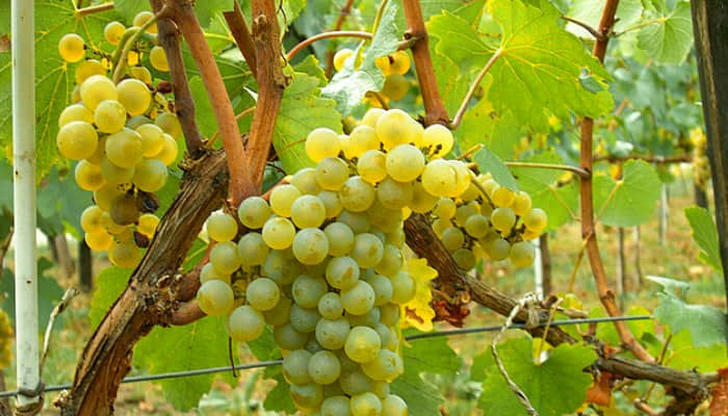Picking a Perfect Bottle (Based on Grapes You Already Love!)
Ever felt lost in the wine aisle, surrounded by hundreds of bottles all promising a unique experience? Grapes are the foundation of wine, influencing everything from color and aroma to body and taste. By getting familiar with a few key players, you'll be well on your way to choosing a bottle you'll truly enjoy.

Think of grapes as the building blocks of wine. There are many kinds, like red ones for Cabernet Sauvignon or green ones for Chardonnay. Each kind makes the wine taste different, just like the ingredients in your favorite cookies make them sweet and yummy, while chili peppers make chili spicy. So, knowing the different grape types helps you pick a wine that tastes good to you! Let's start with red wines, known for their bolder flavors and fuller bodies. They often pair well with richer foods like red meat and aged cheeses.
• Cabernet Sauvignon: The king of reds, Cabernet Sauvignon boasts a full-bodied presence with firm tannins (think of tannins as a slight dryness on your tongue). Imagine flavors of dark fruit like blackberry and blackcurrant, accented with hints of spice and cedar. These wines can age beautifully, developing even more complexity over time. Cabernet Sauvignon shines with a juicy steak or a hunk of aged cheddar.

• Merlot: Consider Merlot Cabernet Sauvignon's softer sibling. It offers a smoother drinking experience while still boasting red fruit flavors. Think plums alongside the red berries, with less intense tannins. Merlot pairs beautifully with pasta dishes, grilled chicken, or even a casual pizza night.

• Pinot Noir: The light-bodied red, Pinot Noir is known for its delicate dance of acidity and red fruit. Imagine flavors of cherry and raspberry, with earthy undertones. This food-friendly wine complements fish, poultry, and mushroom dishes.

There's a whole world beyond these three, of course! Shiraz (also known as Syrah) offers bolder spice notes, while Zinfandel bursts with juicy fruit flavors. Malbec brings a touch of smokiness to the table. Don't be afraid to branch out and explore! Now, let's explore the whites, perfect for lighter meals or a refreshing evening drink.
• Chardonnay: The most popular white grape, Chardonnay is a chameleon. It can be bone-dry and unoaked, showcasing crisp citrus and apple flavors. Or, it can be luxuriously oaked, offering richer notes of vanilla and butter. Chardonnay pairs well with everything from seafood to creamy pastas.

• Sauvignon Blanc: All about crispness and acidity, Sauvignon Blanc bursts with grapefruit, lime, and a touch of grassiness. This is a fantastic wine for salads, shellfish, and anything featuring goat cheese.

• Riesling: Riesling offers a delightful range, from bone-dry to lusciously sweet. It's known for its floral notes and minerality, a taste of the earth where the grapes grew. Riesling is surprisingly versatile, pairing beautifully with spicy food, Asian cuisine, and even desserts.

Other noteworthy whites include Pinot Grigio, known for its light and refreshing style, Gewürztraminer with its explosion of floral and lychee aromas, and Moscato, a sweeter wine perfect for a light appetizer or dessert. Now that you know the basic grape varietals, it's time to delve deeper. Here are some additional tips to navigate the wine aisle with confidence:
• Know your taste: Do you prefer dry or sweet wines? Light and refreshing or full-bodied and bold? Identifying your preferences will help you narrow down your options.
• Explore regional styles: Wines from different regions can have distinct characteristics. French wines tend to be more subtle, while New World wines from places like California or Australia are often bolder and fruitier. Experiment and see what resonates with you.
• Read the label: The label tells a story. Look for the vintage (the year the grapes were harvested), which can influence the flavor profile. Research the producer – a good reputation is often a good sign.

• Price isn't everything: While expensive wines can be exceptional, a high price tag doesn't guarantee quality. Use price as a guideline, but don't be afraid to explore within your budget.
Feeling the urge to delve deeper? Here are a few resources to fuel your wine adventures:
Learn the basics: [Wine Folly] makes wine fun with comics and infographics.
Go pro: [Wine & Spirit Education Trust (WSET)] offers online courses for serious wine lovers.
Make your own! [MoreWine] has kits and resources for aspiring winemakers.
